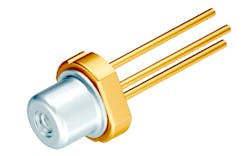Augmented reality (AR) can bring people together…without actually bringing them together. As we know, in the age of COVID-19 and social distancing, that’s more valuable than ever. So it’s not surprising that AR is enjoying something of a resurgence today.
Indeed, there are strong tailwinds pushing the technology forward along with virtual reality (VR), and AR will play an increasingly important role in both our professional and personal lives in the future. I predict the adoption rate will soar over the next decade and that the technology will ultimately reach mass adoption.
In the near term, the global AR/VR market is expected to grow by $125 billion in the period 2020‒2024, according to research firm Technavio. This growth is being fueled by several key trends, including more people working from home, increased online shopping, and the migration of corporate meetings and events from the physical to the virtual world.
The glasses will project lifelike graphical images that we can interact with by performing basic hand gestures. Suddenly, we’re not just conducting a video call with our colleagues. We’re in the same virtual room, with the ability to personally engage, shake hands, and much more, as if together at the office.
Another intriguing example is the ability to use global positioning system (GPS) apps hands-free, which could be very useful for sports such as running and biking. I could also see AR helping factory workers on the production line by projecting assembly instructions directly onto the parts they are working on, or bringing new levels of control to commercial and industrial building systems (Fig. 1).
Seeing the light
What exactly is needed to make this happen? First, we need smart, lightweight glasses that can perfectly overlay virtual images onto the real scene. The so-called combiner optics need to project a high-quality virtual image and also ensure an undisturbed see-through performance. These glasses must also be outfitted with the processing power and sensors to capture our gestures, recognize what we’re doing, and deliver the appropriate content.
Of course, we already have VR headsets today mostly used for gaming , but they’re far from perfect. They have issues of size, weight, and style, as well as other shortcomings. For the best experience, AR glasses must be able to project images with the correct brightness, color spectrum, image quality, and 3-D performance. They also need long battery life.
On the lighting and image-quality front, there are several competing technologies on the market, but there is still no one-size-fits-all solution. There is not a single technology that delivers on every key aspect. For instance, liquid-crystal displays (LCDs) are a mature, low-cost technology, but they have several drawbacks when applied to an AR environment, such as low resolution and poor color representation.
In contrast, digital light processing (DLP) and liquid-crystal-on-silicon (LCoS) lighting technologies offer good brightness and rich colors, but their system size might still be too large for mass deployment. Laser-based scanning mirror technology, for its part, offers a very small system size and attractive power efficiency — which is not the case for LCoS/DLP. LCoS/DLP are constantly flood illuminated with light, regardless of whether pixels are dark or bright. In addition, laser-based scanning mirror technology offers excellent colors and contrast, but the technology comes with a high price tag.
There are micro OLED and micro LED technologies that claim to address many core issues but, at least in the case of micro LEDs, the solutions may not be bright enough and are still in the process of being developed, so they are not yet ready for prime time (see an LEDs Magazine feature article on the prognosis for mini and micro LEDs, which addresses the display application specifically but also explains the fabrication challenges of such devices).
The path to critical mass
The jury is still out on the ultimate solution. But I don’t think that should be a roadblock for AR device manufacturers. Yes, it will take time before there is a complete solution, but there is no need for to wait for the perfect technology.
Manufacturers, for instance, can start with an AR lighting solution based on laser technology, because that is one of the most promising solutions today (Fig. 2). They can then migrate to next-generation lighting technologies such as micro LEDs once these are introduced to the market.
Taking a step further into the future, I believe that solid-state lighting (SSL) technology suppliers will eventually start to deliver a more complete product set to device manufacturers. Already, forward-thinking LED lighting suppliers are positioning themselves to offer other pieces of the AR puzzle, such as camera and sensing technologies. Ultimately, the best suppliers will be able to deliver a fully integrated, next-generation AR solution.
The point here is that both suppliers and manufacturers need to move now to stake their place in the market. I believe device manufacturers should start with offerings geared toward professional and enterprise users — for instance, AR solutions for retailers that offer virtual fitting rooms or applications built for the military that make it safer and more cost-effective to engage in training and war games. Indeed, Microsoft last year secured a $479 million contract to outfit the US Army with its HoloLens AR headset for this very purpose.
Starting with these government and enterprise contracts is a good way for AR device companies to prove out their technologies while improving their product quality and getting their costs under control. From there, they can roll out their technologies in much larger volumes to the consumer market.
What’s the bottom line? We know that AR has a bright future and that it absolutely has the potential to reach critical mass in the consumer market and change the future of computing.
When AR gets real
It’s true that AR has been rhyped in the market for years and that the technology has a history of overpromising and underdelivering. But we are approaching an inflection point. This disruptive technology is finally poised to take the world by storm, especially as big consumer companies continue to think deeply about AR.
Ultimately, the growing application areas of AR technology in fields such as education, medical, and retail will boost the growth of the global market and pave the way to mass consumer adoption. I am convinced that the market opportunities for augmented reality have never been more real.
Get to know our expert
EMMANUEL DIEPPEDALLE is president and CEO, and senior vice president of global sales of Osram Opto Semiconductors Inc. Osram is the second-largest manufacturer of optoelectronic semiconductors in the world. Prior to his role at Osram OS, he has worked in sales, marketing, and executive management at top companies including Philips, NXP Semiconductors, and Lumileds assuming responsibility for new business development across multiple electronics sectors.
For up-to-the-minute LED and SSL updates, why not follow us on Twitter? You’ll find curated content and commentary, as well as information on industry events, webcasts, and surveys on our LinkedIn Company Page and our Facebook page.







